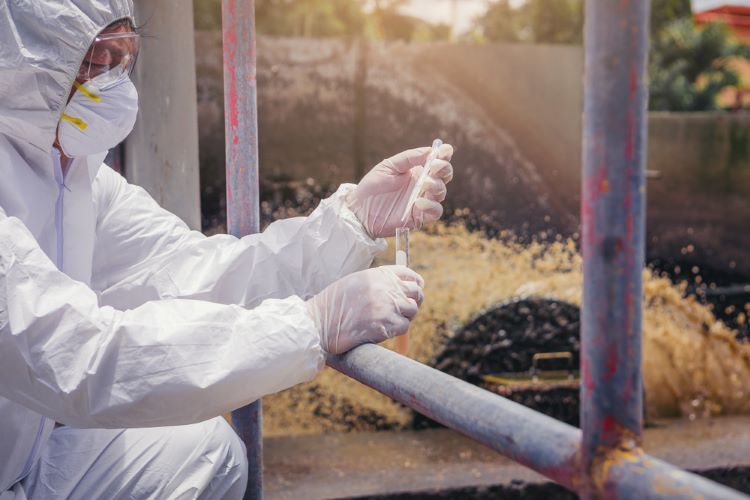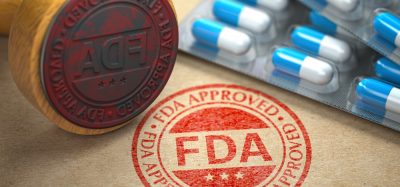Monitoring pharmaceuticals in the environment
Posted: 18 April 2024 | Andreas Häner (Roche) | No comments yet
Andreas Häner, an environmental risk assessor at Roche in Group Safety, Security, Health & Environmental protection (SHE), speaks to EPR about how the pharmaceutical industry monitors manufacturing emissions that can impact local environments.


What are the three main challenges of monitoring pharmaceuticals in the environment?
Andreas Häner (AH): Roche, along with other pharmaceutical companies, acknowledges concerns about pharmaceuticals in the environment (PiE). While pharmaceutical manufacturing’s overall contribution is small compared to patient use and inappropriate disposal of pharmaceuticals, inadequately managed manufacturing emissions can impact local environments and receiving waters. Environmental monitoring (EM) relies on mass balances to estimate losses and chemical analysis of waste stream samples to determine the actual concentrations and remove uncertainty. When measuring active pharmaceutical ingredient (API) concentrations in effluents, the limit of quantification (LoQ) of the chosen analytical method must be sensitive enough to measure anticipated effluent concentrations or risk-derived targets at the sampling point.


Another important consideration is the sampling point. Wastewater samples taken at or close to the point of generation in manufacturing typically have a much higher API concentration, thus require less analytical sensitivity. Samples at the site end of pipe typically require a much lower LoQ, thus higher analytical effort due to higher dilution and prior contaminant removal by wastewater treatment. However, testing wastewater at the manufacturing end of the pipe provides more representative data for actual contaminant concentrations.
Moreover, there are some challenges with generating meaningful data when sampling pharmaceutical wastewater. A well-designed wastewater sampling plan will ensure that representative samples are collected. Choosing the sample location, sample type/sampling equipment, number of samples and sample dates will depend on several factors, including: API of interest, sampling objectives, analytical target and data quality objectives, site production schedule and wastewater discharge temporal variations, and residence times in collection/treatment systems.
What are the top two considerations for quality control in environmental monitoring?
AH: Selecting the most appropriate analytical method must be discussed and determined in concert with the analytical laboratory. It is important to understand the quality assurance/quality control (QA/QC) specifications for analytical methods that will be used. These are the detection and quantitation limits, and matrix interferences.
Method selection involves, at a minimum, selecting analytical methods that meet the following: QC tests as an integral part of the method; QC acceptance criteria must be part of the method; and the method detection limit should be at least one third of the targeted concentration limit.
Detection and quantitation limits are essential components of an analytical method. The difference between detection limits and quantitation limits is very important. At a quantitation limit, there is a much lower chance of a false positive measurement (ie, reporting a substance as present when it is not) than there is at a detection limit. While not always possible, it is best to assure that the quantitation limit is suitable for determining whether safe concentrations in the receiving waters are being met.
What is the best way EM professionals can support sustainability in their work?
By sharing best practices and fostering cooperation, [environmental monitoring professionals] help drive sustainable outcomes across organisational functions”
AH: Environmental monitoring professionals play a crucial role in supporting sustainability in many areas. Firstly, they contribute by interpreting and addressing increasingly stringent regulatory requirements regarding environmental quality standards. This involves assessing the impact of regulations on aspects such as API discharge and their implications for the environment. These professionals also support sustainability by promoting responsible effluent management practices that go beyond compliance. This entails managing effluent discharge across the entire supply chain, conducting comprehensive risk assessments, and advocating for broader perspectives in decision-making. In addition, EM professionals facilitate collaboration among diverse stakeholders, including procurement, operational manufacturing and engineering maintenance teams for broader effluent management. By sharing best practices and fostering cooperation, they help drive sustainable outcomes across organisational functions.
What development do you anticipate will impact monitoring of PiE the most in the next five years?
AH: Technology innovations like real-time monitoring systems: more accurate, efficient and cost-effective monitoring may allow improvements in continuous monitoring, data integration and predictive analysis that will enhance programmes to monitor pharmaceuticals in the environment. Moreover, regulatory changes will lead to more stringent quality standards and increased reporting requirements.
Technology innovations like real-time monitoring systems… may allow improvements in continuous monitoring, data integration and predictive analysis that will enhance [environmental monitoring] programmes”
Emerging contaminants such as microplastics, PFAS and endocrine-disrupting chemicals may impose updates to the monitoring protocols to proper management. Stakeholders’ awareness and engagement about environmental impacts, resource use and pollution could change the requirements and the strategies of environmental monitoring.
Data management and analysis will extract meaningful insights and inform decision-making. Machine learning and artificial intelligence may be employed to process large volumes of data and identify trends, anomalies and potential risks associated with effluent discharges.
About the author


Andreas studied at ETH Zurich with a focus on biotechnology and did his doctorate and post-doctorate in environmental microbiology. He has over 20 years of experience in consulting for the chemical and pharmaceutical industry and was head of the Ecotox Laboratory and the Department of Product Stewardship.
Related topics
Big Pharma, Biopharmaceuticals, Data Analysis, Industry Insight, Manufacturing, QA/QC









